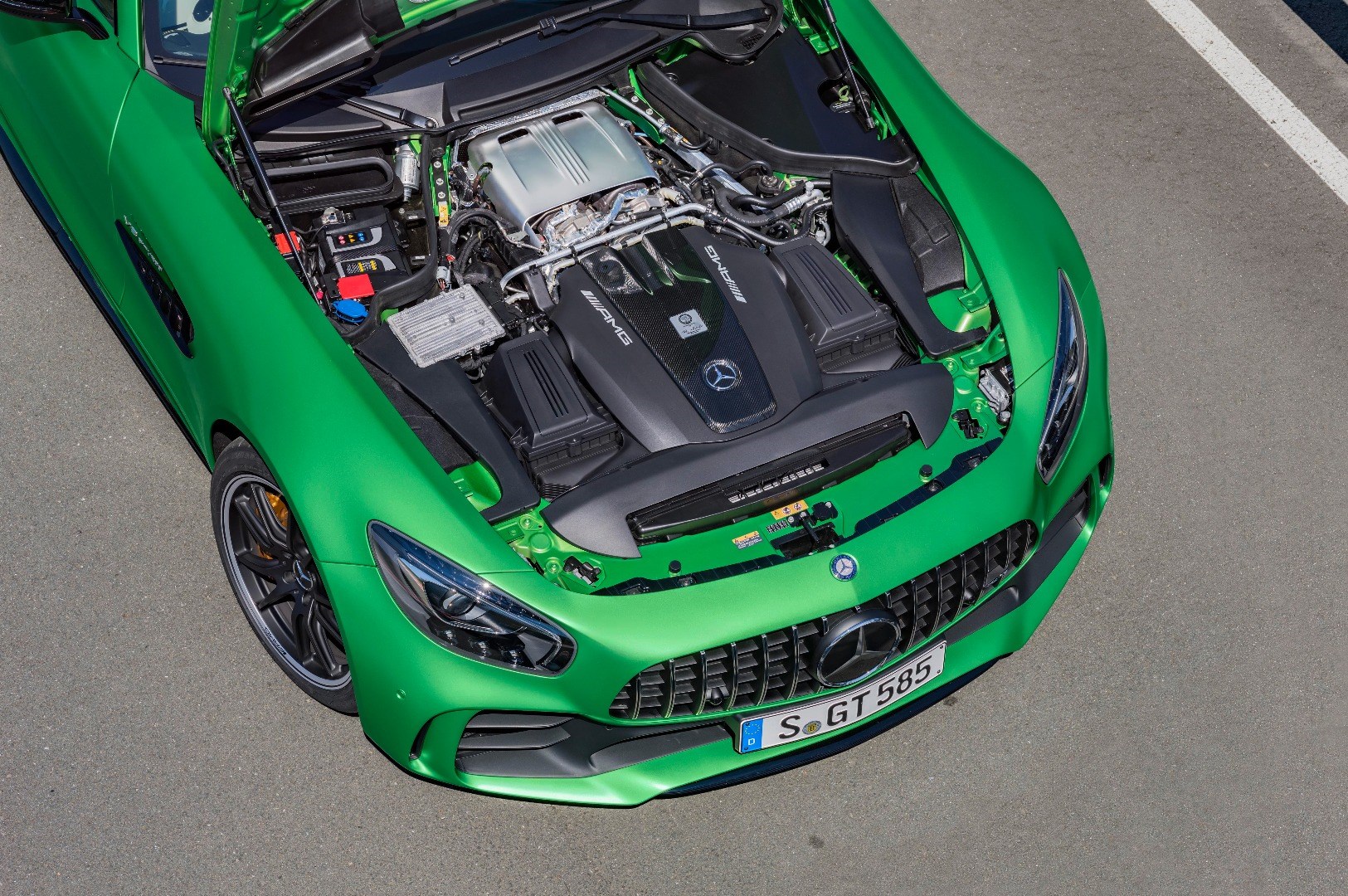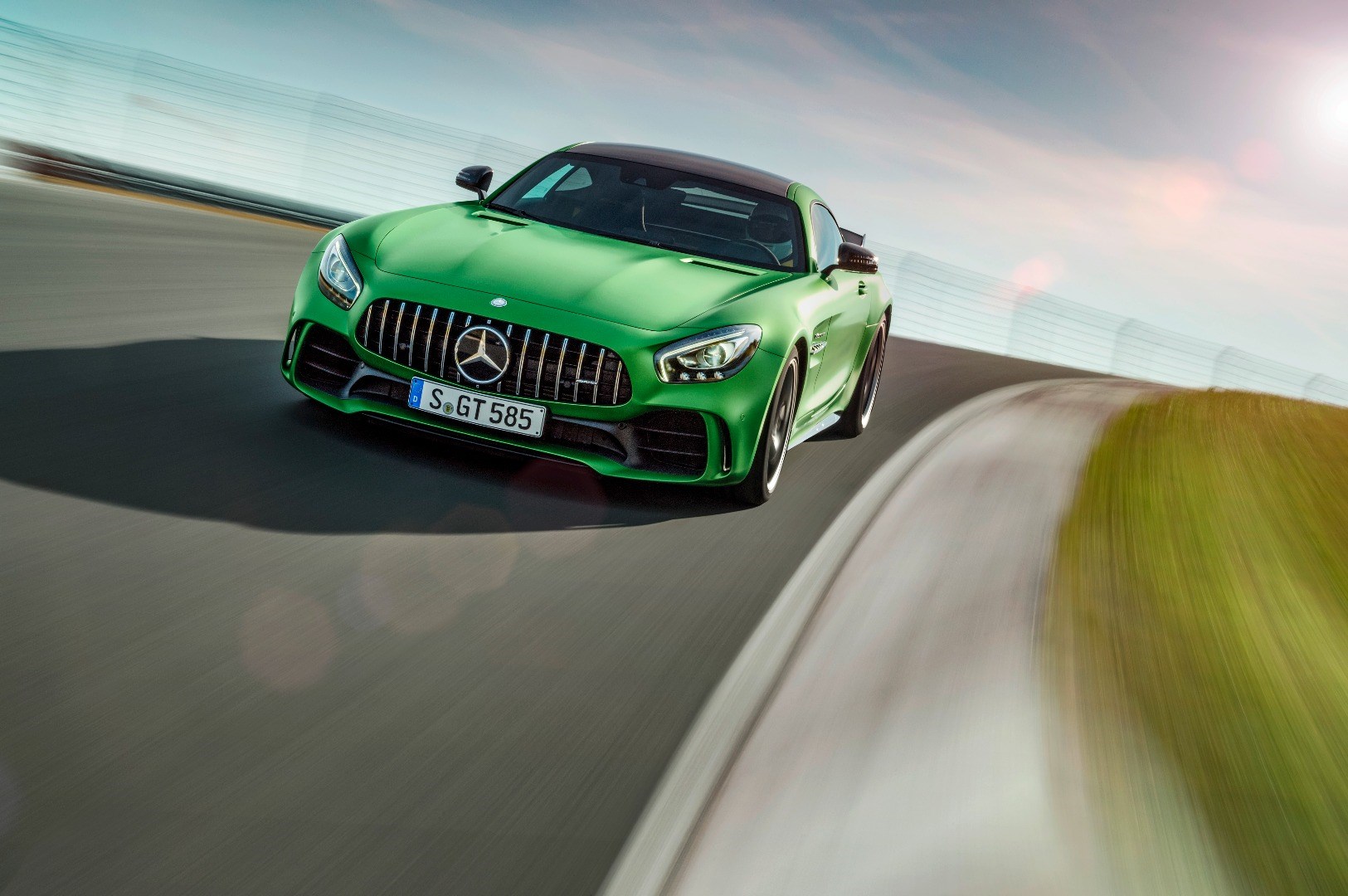The wraps have come off the new 2017 Mercedes-AMG GT R, ahead of an Australasian launch expected in July next year.
Spied numerous times in recent months, the GT R’s coming was long known, as was its name and the fact that it would enter as a successor to the hero Black Series model that ruled the roost in the now-retired SLS AMG line.
Quite the successor it is. As expected, power is provided again by AMG’s new 4-litre twin-turbo V8, just as it is with the “regular” GT and GT S models. But, whereas those two offer 340kW/600Nm and 375kW/650Nm tunes – the latter being the only option offered in Australia – this new beast turns the wick up to 430kW and 700Nm.
By comparison, the SLS AMG Black Series extracted 420kW and 650Nm from its much bigger, much heavier 6.2-litre naturally-aspirated V8. The new GT R has another advantage: at 1555kg, it’s 70kg lighter than its spiritual predecessor.

Still, those power and weight differences appear to offer no favours to the GT R at the drag strip, with both cars listing 0-100km/h times of 3.6 seconds. And, despite its power boost over the GT S, this new hero is just 0.2 seconds quicker to the ton.
Power is again sent to the rear wheels, with the 4-litre V8 matched to a heavily modified version of the seven-speed dual-clutch automatic transmission that features in the GT and GT S.
Helping to achieve the new figures is a pair of new turbochargers with modified compressor housing, increasing boost from 1.2 bar in the GT to 1.35 bar in the GT S.
As the most track-focused fighter in the GT trio, the GT R also picks up an extensively modified suspension system, a new aero package, and pumped guards at both ends for a wider track.

AMG says the GT R’s development was based on data drawn from the AMG GT3 customer racing series and the German Touring Car Masters championship, while its “Green Hell Magno” colour is named for the legendary North Loop of the Nurburgring course.
The new hero coupe rides on a staggered 19- and 20-inch wheel configuration, front-rear respectively.
The perforated and ventilated brakes on the GT R measure 390mm at the front and 360mm at the rear, but an optional Hi-Po brake system is even better with 402mm at the front and 360mm at the rear.
There’s a big fixed wing at the rear, and the GT R also lands a new active aerodynamics system, concealed in the underbody ahead of the V8 engine. At speeds beyond 80km/h, in race mode, the carbon profile moves slightly downwards — enough to enable a “Venturi effect”, sucking the car on to the road and reducing front-axle lift.
The GT R employs liberal use of carbon fibre, including on the torque tube, which is now about 40 per cent lighter. More weight savings come from the wheels, which are forged titanium.
The GT goes on sale in Europe in November, with deliveries due there in March. An Australasian launch will follow in July 2017.
— CarAdvice.com.au





























